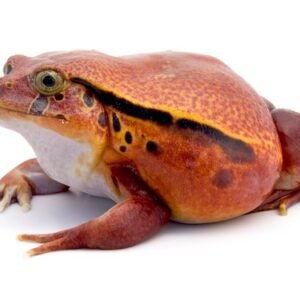tomato frog food
Natural Diet of Tomato Frogs in the Wild
The tomato frog, native to Madagascar, exhibits a varied diet that primarily consists of insects and small invertebrates. In their natural habitat, these frogs have adapted to thrive on a diet rich in protein, which is crucial for their growth and development. The key components of their diet include crickets, beetles, and worms, all of which are abundant in their surroundings. These food sources not only provide essential nutrients but also contribute to the frogs’ vibrant coloration, which can serve as a warning signal to potential predators.
Tomato frogs employ a unique hunting strategy that allows them to effectively capture their preferred prey. They utilize their keen sense of sight to detect movement and then ambush their target with a rapid leap. Once they capture an insect, they consume it whole, benefiting from the full nutritional value of their meal. The high protein content found in their diet is vital, as it supports muscle development and energy levels, enabling these frogs to remain active in their ecosystems.
Seasonal variations can also influence the availability of certain food items in the wild. During the wetter months, when humidity levels rise, insects proliferate, providing an ample food supply for tomato frogs. Conversely, in drier periods, the reduced insect population may lead to changes in their feeding habits. Additionally, environmental factors such as temperature and habitat disturbances can impact the hunting efficiency of these frogs. Overall, the natural diet of tomato frogs is intricately linked to their ecology, emphasizing the importance of a well-balanced feeding regimen in captivity that reflects their wild dietary preferences.
Feeding Tomato Frogs in Captivity: Guidelines and Recommendations
Feeding tomato frogs in captivity requires a careful approach to ensure their health and well-being. These amphibians primarily consume a diet similar to what they would experience in the wild, focusing predominantly on live prey. Their natural diet primarily consists of various insects, such as crickets, mealworms, and earthworms, which serve as an excellent source of nutrients. In addition to live foods, it is advisable to include freeze-dried or commercially available insect-based diets to add variety and mimic natural feeding behaviors.
A suitable feeding schedule for tomato frogs is essential for maintaining optimal health. Young tomato frogs should be fed daily, while adults can be fed every other day. It is crucial to provide an amount of food that they can consume within a short time, which generally translates to two to four appropriately sized insects per feeding session. Overfeeding can lead to obesity and related health issues, so monitoring their body condition is important.
Nutritional supplements, particularly calcium and vitamin D3, should be sprinkled on the prey items before feeding. These supplements help prevent deficiencies and are vital for the overall growth and bone health of tomato frogs. It is important to remain vigilant for signs of nutritional deficiencies, such as lethargy and a weakened immune system, which may indicate that dietary adjustments are necessary.
When introducing new foods to your pet tomato frog, it is advisable to do so gradually. Start with small amounts and monitor their response, ensuring they accept the new items. Providing clean, fresh water is also crucial, as it supports their feeding behavior and overall hydration. Additionally, maintaining proper habitat conditions, including humidity and temperature, further aids in digestion and contributes to a healthier pet. With proper dietary care, tomato frogs can thrive in captivity.
Showing the single result
-
Frogs & Toads for Sale
tomato frog
Original price was: $89.00.$79.00Current price is: $79.00. Add to basket

